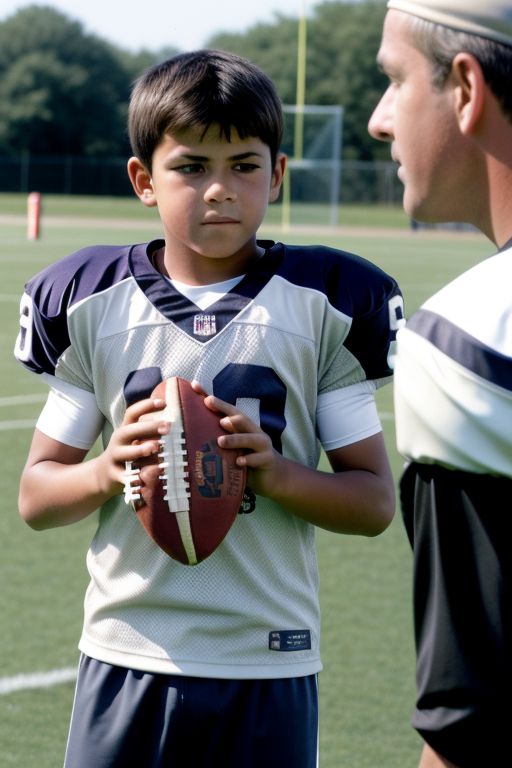
While focusing on a single sport at a young age may seem like a fast track to athletic success, research suggests otherwise. A study published in the University Hospitals Cleveland Medical Center blog highlights the increased risk of overuse injuries, burnout, and even dropping out of sports altogether when young athletes specialize too early. This aligns with findings from the National Institutes of Health, which emphasize the importance of "diversified athletic participation" to reduce injury risk and promote long-term athletic development.
“Specialization is especially risky in children younger than high school age, whose bones are still developing…” Overuse injuries are very common in athletes who play in season, for example at school, then continue on to club for another season. “Once the athlete is skeletally mature, it may be safer, but early sport specialization still leads to an increased risk of injuries and it doesn’t necessarily benefit athletic performance,” he [Dr. Calcei] says.”
Another important consideration is off-season training time is limited when athletes are constantly playing their sport. This means strength and conditioning coaches have less time to develop strength and power in athletes, which not only reduces athletic ability and output, but does not allow the athlete’s tendons and ligaments to train in other capacities or to rest from in-season use.
For example, young tennis players, due to their developing bodies and repetitive use of specific muscle groups, are prone to several overuse injuries. Here are some of the most common:
Upper Body:
Medial epicondylitis (golfer's elbow): Pain and inflammation on the inner side of the elbow, caused by overuse of the forearm muscles involved in forehand strokes.
Lateral epicondylitis (tennis elbow): Pain and inflammation on the outer side of the elbow, caused by overuse of the forearm muscles involved in backhand strokes.
Shoulder impingement: Pain and discomfort in the shoulder joint due to rubbing or pinching of tendons against the bones. This can be caused by repetitive overhead motions like serving.
Rotator cuff tendinitis: Inflammation of the tendons in the shoulder, often caused by repetitive overhead motions and improper technique.
Lower Body:
Patellar tendinitis: Inflammation of the tendon connecting the kneecap to the shinbone, caused by overuse and repetitive jumping movements.
Osgood-Schlatter disease: Pain and inflammation below the kneecap, caused by repetitive stress on the growth plate in young athletes.
Severs disease: Pain and inflammation in the heel, caused by repetitive stress on the growth plate in the heel bone.
Other:
Wrist pain: Can occur due to overuse of the muscles and tendons involved in gripping the racket and controlling strokes.
Back pain: Can arise from improper technique, poor posture, and muscle imbalances.
While young football quarterbacks experience the same potential for overuse injuries as other athletes, their specific position exposes them to certain risks associated with throwing mechanics and repetitive motions. Here are some of the most common overuse injuries seen in young quarterbacks:
Shoulder Injuries:
Rotator cuff tendinitis: Inflammation of the tendons in the shoulder, often caused by repetitive throwing motions and improper technique. This can lead to pain, weakness, and difficulty raising the arm.
Labral tear: A tear in the labrum, a ring of cartilage that helps stabilize the shoulder joint. This can occur due to repetitive overhead throwing motions or sudden falls.
Shoulder impingement: Pain and discomfort in the shoulder joint due to rubbing or pinching of tendons against the bones. This can be caused by repetitive overhead motions like throwing.
Ulnar collateral ligament (UCL) sprain: Commonly known as "Tommy John surgery," this injury involves damage to the ligament on the inner side of the elbow responsible for stabilizing the joint during throwing. It's often caused by repetitive overhead throwing motions and improper mechanics.
Medial epicondylitis (golfer's elbow): Pain and inflammation on the inner side of the elbow, caused by overuse of the forearm muscles involved in throwing motions.
Other Potential Injuries:
Lower back pain: Can arise from improper throwing technique, poor core strength, and repetitive twisting motions.
Knee injuries: Patellar tendinitis (inflammation of the tendon below the kneecap) and Osgood-Schlatter disease (pain below the kneecap in growing athletes) can occur due to repetitive jumping and landing mechanics.
It's important to note that this list is not exhaustive, and any pain or discomfort experienced by a young athlete should be evaluated by a qualified healthcare professional.
Burnout is another important consideration. Many single sport athletes experience burn out and discontinue sports altogether. “‘Parents who want their kids to specialize early on may be doing more harm than good,’ said Dr. Liebig of the Center for Orthopedics and Sports Medicine at Akron Children’s. ‘Parents need to realize more isn’t better. You’re burning these kids out. We see it more and more. Some of these kids don’t just suffer physically, but emotionally and even psychologically.’”
Dr. Liebig goes on to make many recommendations including early diversification. At D1 Training we train our athletes to develop a wide athletic base, which helps to counter overuse injuries and also help athletes become more well rounded as they mature. In addition, although a young athlete may train and wish to become a quarterback or wide-receiver for example, they may end up developing physically more suited for a different position or even sport. A coach can adapt a well rounded athlete to a position the athlete is better suited for. The better prepared an athlete is, the better for their health and future in sports.
Interestingly, many professional athletes across various sports were multi-sport athletes in their youth. NSR Scouting reports that 80% of NFL draft picks played multiple sports in high school. This diverse athletic background not only fosters a well-rounded skill set but also instills a love for movement and competition, potentially leading to a longer and more fulfilling athletic journey.
Encouraging participation in various sports and training a wide athletic base early allows young athletes to explore their potential, develop a lifelong love for movement, and ultimately, reach their full athletic potential, both on and off the field or court.
